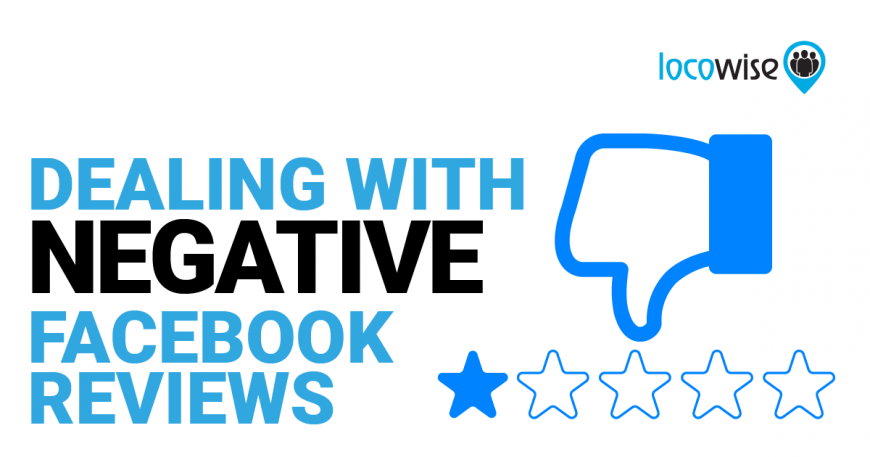Dealing with negative Facebook comments
Sophie Beard posted on 1 March 2021
As brands, the last thing we all need on social media is negativity. On social media it is very easy to receive negative comments and responses, simply because you are leaving yourself open to them due to the fact you are engaging with people online. So how should you deal with negativity? There are numerous aspects to dealing with negativity on Facebook, and we’re going to focus on these in this post.

Don’t disable or remove comments
One of the biggest mistakes you can make as a brand on Facebook is to disable the ability for visitors to publish posts on your page or to remove the comments. This is because Facebook has incredible potential and benefits for any brand, and these far outweigh any rationale behind not letting people to post or removing negative comments. The best approach from the outset is to take on the challenge of negative comments and focus on positive ways to manage them (unless, of course, they are racist or offensive, or a legal issue).
You are meant to engage, and the very best brands in the world are open and honest no matter how big they are.
3-step guide to dealing with negative comments
1. Acknowledge comments
The first thing you have to do with negative comments is acknowledge them as people expect a quick response. While you may not be able to solve a problem immediately you can certainly acknowledge that there is a problem. Simply respond with an acknowledgment comment yourself.By offering a quick acknowledgement you have immediately set a positive tone. And it simply shows that you care deeply about how your customers feel about your product or service.
Try: ‘We have received your comment and have taken note of your concerns. We will be in touch shortly to address the issue.’
2. Apologise when an apology is necessary
You then need to apologise as quickly as possible if an apology is necessary. It isn’t always necessary, and small and silly comments can largely be ignored if they are not offensive. But if someone is genuinely annoyed and upset at the service they have received you need to ensure that you apologize.
People will see that you have apologised, and that you are, most importantly, not too removed and detached from reality to say sorry. Any company that can say sorry is a positive, caring company.
Make it sincere. Don’t use a statement that has been manufactured. Create a sincere, genuine apology and post it as soon as possible. Take any big brand that does well on Facebook and you will find that they are not too big to apologise. Take their lead and make it your business to say sorry when it’s needed.
3. Deal with the matter offline
Another good idea after you have acknowledged the issue and said sorry if necessary is to arrange to deal with the matter offline. Continuing to discuss an issue on Facebook is never a good idea this is because people will simply see that there is an issue, and they will gain the kind of insight into your customer service strategy that they really don’t need to see.
Facebook allows pages to reply to sensitive public comments in private and will display a public note to show that the page has responded to the customer.
Give the customer a number to call your company on or offer to give them a call if they are comfortable providing a phone number so you can deal with the issue off Facebook. It allows the customer to feel like they are being treated as an individual and that you’re taking their comments seriously.
Going “offline” takes away the problem and does not broadcast every detail on Facebook. While you may not end up in a situation where you are throwing insults at each other on Facebook, you are still dealing with what is a problem. And you don’t want a problem to be associated with your brand for too long.
So, to sum up. Acknowledge, apologise and then deal with it offline.
Banning commenters: For the haters
This is not to be followed as a course of action unless there has been real hatred of the worst kind. We’re talking racial slurs or offensive material that is designed to hurt, harm or offend. Again, as a brand, you probably won’t be facing this kind of rubbish on a daily basis, but if you do and it is genuinely hurtful and offensive, get it banned.
You really don’t want nasty stuff on your feed and neither does your customer base. Delete anything that is offensive, and that’s the bottom line. Turn on the “profanity filter” in your Facebook page settings. Add words you’d like to block from comments and posts.
You can also use the opportunity to then ban the person from your page and report the person to Facebook and get them out of the picture. This is perfectly acceptable and it is actually a sign that a brand is looking at it’s content, and thinking about the fanbase.
If you imagine it from a customer’s point of view for a second. They hit up your feed and then start to see nasty words, offensive comments about race or gender or anything like that. It doesn’t paint the nicest picture of your brand. Apart from the really nasty stuff, you should be engaging, even when criticism flies on Facebook. Essentially, the more you communicate and try to resolve stuff, the more you are practising good old-fashioned customer service, and that makes for a better experience for all of your customers.
Fancy some data on your Facebook customer service that can give you information that you need to do better? Try LocoWise for a free 7-day trial. It will ensure that you have the kind of Facebook data that helps your brand stay on top of it all, all the time.





